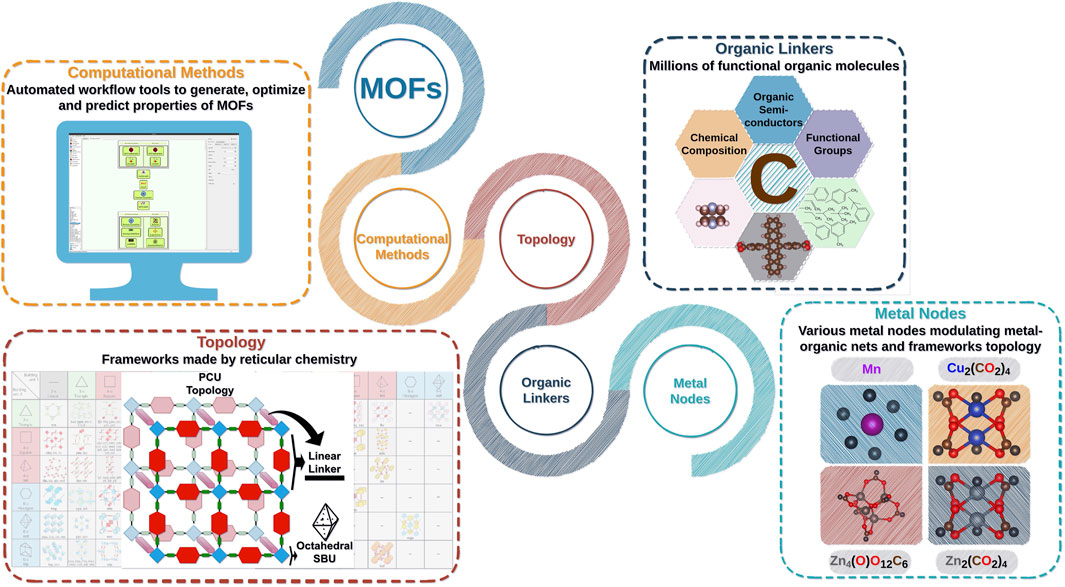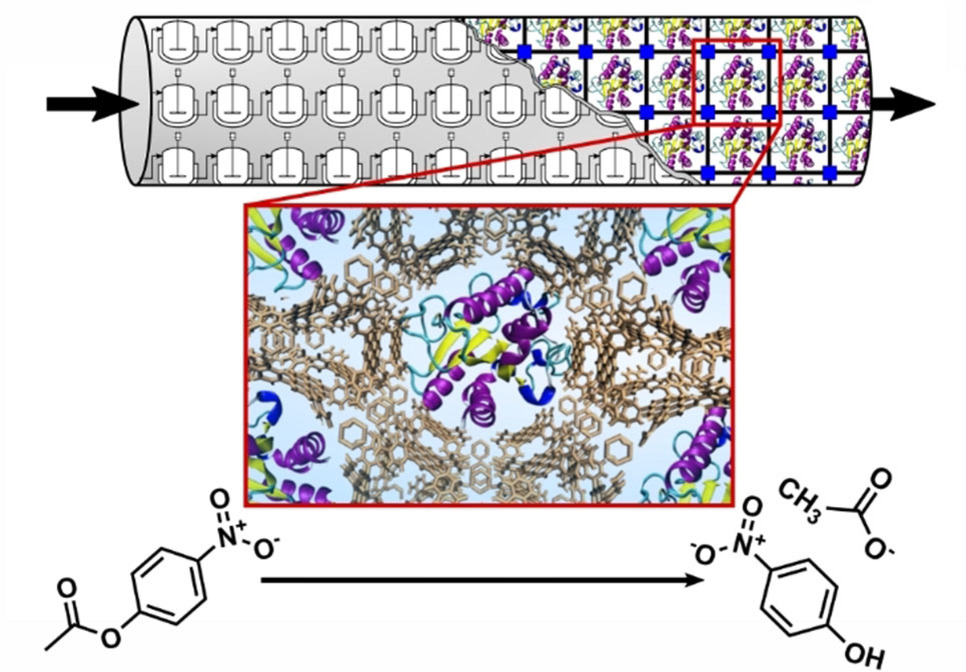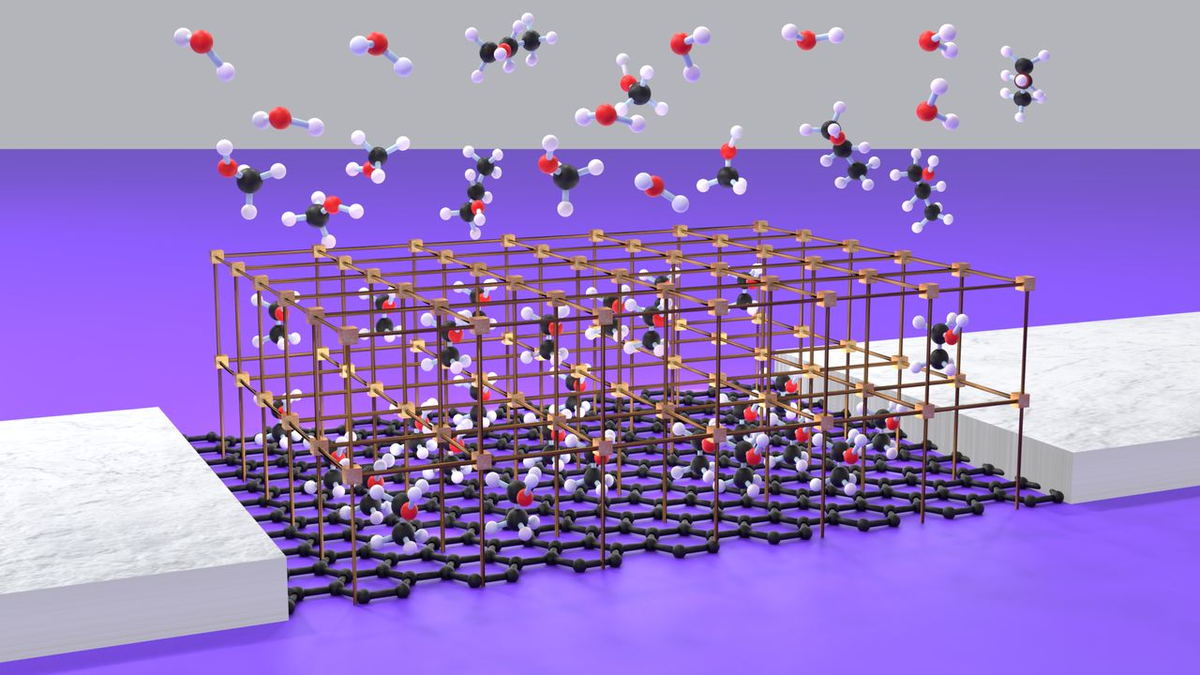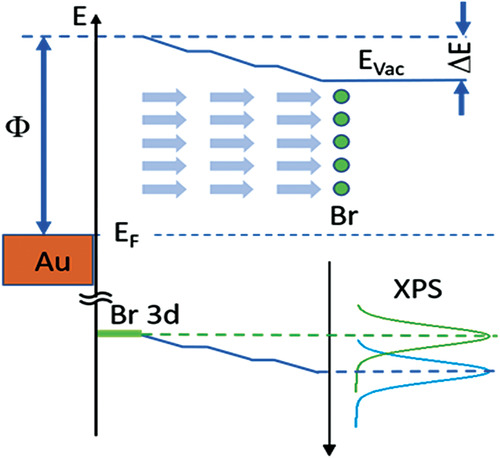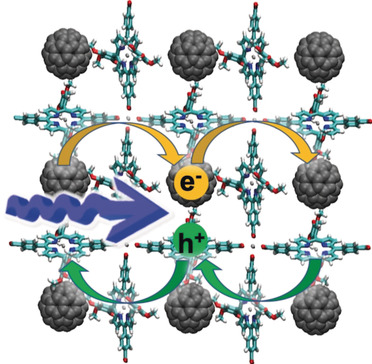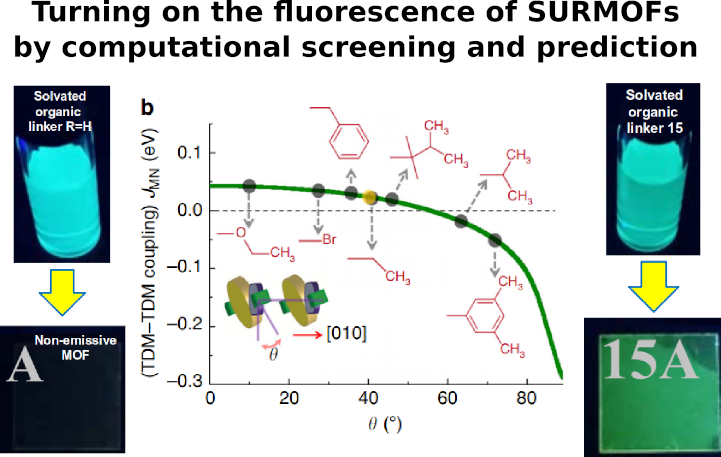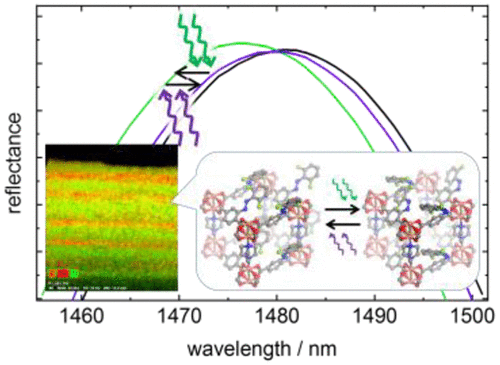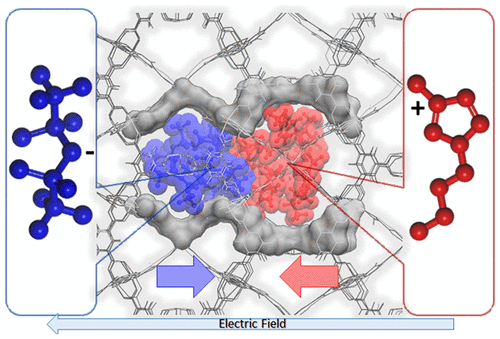Metal-Organic Frameworks
Metal-organic frameworks (MOFs) are a large emerging class of nanoporous crystalline materials consisting of metal ions (or clusters) spatially coordinated by multidentate organic ligands. Due to the nearly infinite variety of MOFs building blocks, they are characterized with enormous structural possibilities with tunable pore sizes and functionality. Therefore, MOFs have become one of the most interesting research areas in materials science with a broad range of applications, ranging from the gas adsorption, storage and separation up to optics, energy transfer materials, sensorics, medical diagnostics etc. In our group, we use quantum mechanics and molecular dynamics, within all atom and coarse grained ansatz, to understand the photophysical phenomena: energy transfer, photon upconversion, photoconduction, and tuning of the optical properties of the MOF thin films with the specific focus on the systematic MOF crystal structure engineering and in silico prediction of MOF building blocks with desired functionality.
The projects related to studies of MOFs in our group are the part of the 3DMM2O Cluster of Excellence, SFB 1176 Collaborative Research Centre and COORNETs (SPP 1928).
Automated Virtual Design of Organic Semiconductors Based on Metal-Organic Frameworks
The arrangement of organic semiconductor molecules in a material can be modulated using different supramolecular approaches, including the metal–organic framework (MOF) approach. Fabrication of materials comprising optimized assemblies and functional molecules enables efficient tailoring of material properties, including electronic responses. Since semiconducting properties are sensitive to subtle changes in the nanostructure of the material, the exploitation of MOFs has promising potential in the development of new materials with designed structure and function. We present and demonstrate the application of an automated workflow tool developed for MOFs of the primitive cubic (PCU) topology, using pentacene-based ditopic linkers of a varied chemical composition and pillar linkers of different molecular sizes to automatically generate PCU MOFs, sample their structural dynamics at finite temperature, and predict electronic coupling matrix elements in vibrationally averaged assemblies.
MOF-Hosted Enzymes for Continuous Flow Catalysis in Aqueous and Organic Solvents
A continuous flow enzyme reactor was developed using a metal–organic framework (MOF) to immobilize the enzyme. The MOF NU-1000 was inserted into a HPLC column and loaded with esterase without any modification of the MOF or the enzyme. A high space-time yield of 1432 g L−1 h−1 was achieved, and the stability of the immobilized enzyme was enhanced to about 30 times that of the free enzyme. Fully exploiting the potential of enzymes in cell-free biocatalysis requires stabilization of the catalytically active proteins and their integration into efficient reactor systems. Previous research had been limited to batch experiments and to aqueous conditions. Here we demonstrate a MOF-based continuous flow enzyme reactor system, with high productivity and stability, which is also suitable for organic solvents. Under aqueous conditions, the stability of the enzyme was increased 30-fold, and the space–time yield exceeded that obtained with other enzyme immobilization strategies by an order of magnitude.
Sensing Molecules with Metal–Organic Framework Functionalized Graphene Transistors
Graphene is inherently sensitive to vicinal dielectrics and local charge distributions, a property that can be probed by the position of the Dirac point in graphene field-effect transistors.Mmetal–organic frameworks can be tailored to selective adsorption of specific molecular species. Here, a selective ethanol sensor is demonstrated by growing a surface-mounted metal–organic framework (SURMOF) directly onto graphene field-effect transistors (GFETs). Tailoring multiple SURMOFs to adsorb specific gases on an array of such devices thus generates a versatile, selective, and highly sensitive platform for sensing applications.
Avoiding the Center-Symmetry Trap: Programmed Assembly of Dipolar Precursors into Porous, Crystalline Molecular Thin Films
Liquid-phase, quasi-epitaxial growth is used to stack asymmetric, dipolar organic compounds on inorganic substrates, permitting porous, crystalline molecular materials that lack inversion symmetry. This allows material fabrication with built-in electric fields. A new programmed assembly strategy based on metal–organic frameworks (MOFs) is described that facilitates crystalline, noncentrosymmetric space groups for achiral compounds. Electric fields are integrated into crystalline, porous thin films with an orientation normal to the substrate. The integration of built-in electric fields into organic, crystalline, and porous materials creates possibilities for band structure engineering to control the alignment of electronic levels in organic molecules. Built-in electric fields may also be used to tune the transfer of charges from donors loaded via programmed assembly into MOF pores.
Photoconductivity in Metal–Organic Framework (MOF) Thin Films
Surface‐mounted MOF thin films (SURMOFs), containing porphyrin in the framework backbone and C60 guests loaded in the pores, show two orders of magnitude increase of On–Off photocurrent ratio. By comparison with results obtained for reference MOF structures and based on DFT calculations, we prove that donor–acceptor interactions between the porphyrin of the host MOF and the C60 guest molecules give rise to a rapid charge separation. Subsequently, holes and electrons are transported through separate channels formed by porphyrin and by C60, respectively. The ability to tune the properties and energy levels of the porphyrin and fullerene, along with the controlled organization of donor–acceptor pairs in this regular framework offers potential to increase the photoconduction On–Off ratio.
A de novo strategy for predictive crystal engineering to tune excitonic coupling
We integrated the photoactive compounds into metal-organic frameworks (MOFs) and tuned the molecular alignment by introducing adjustable “steric control units” (SCUs). We determined the optimal alignment of core-substituted naphthalenediimides (cNDIs) to yield highly emissive J-aggregates by a computational analysis. Then, we created a large library of handle-equipped MOF chromophoric linkers and computationally screened for the best SCUs. A thorough photophysical characterization confirmed the formation of J-aggregates with bright green emission, with unprecedented photoluminescent quantum yields for crystalline NDI-based materials. This data demonstrates the viability of MOF-based crystal engineering approaches that can be universally applied to tailor the photophysical properties of organic semiconductor materials.
Light-Switchable One-Dimensional Photonic Crystals Based on MOFs with Photomodulatable Refractive Index
We investigate the photomodulation of the refractive index of a crystalline material, made of TiO2 layers and nanoporous MOF with azobenzene side groups. Spectroscopic ellipsometry and precise DFT calculations show the optical-density change results from the different orbital localizations of the azobenzene isomers and their tremendously different oscillator strengths. The photomodulation of the MOF refractive index controls the optical properties of the quasi-one-dimensional photonic crystal with Bragg reflexes reversibly shifted by more than 4 nm.
Bunching and Immobilization of Ionic Liquids in Nanoporous Metal–Organic Framework
The experimental data combined with molecular dynamics simulations unveils astonishing dynamic properties of room-temperature ionic liquids (ILs) embedded in well-defined pores of metal–organic frameworks (MOFs). At low IL loadings, the ions drift in the pores along the electric field, whereas at high IL loadings, collective field-induced interactions of the cations and anions lead to blocking the transport, thus suppressing the ionic mobility and tremendously decreasing the conductivity. The mutual pore blockage causes immobilized ions in the pores, resulting in a highly inhomogeneous IL density and bunched-up ions at the clogged pores. These results provide novel molecular-level insights into the dynamics of ILs in nanoconfinement, significantly enhancing the tunability of IL material properties.

